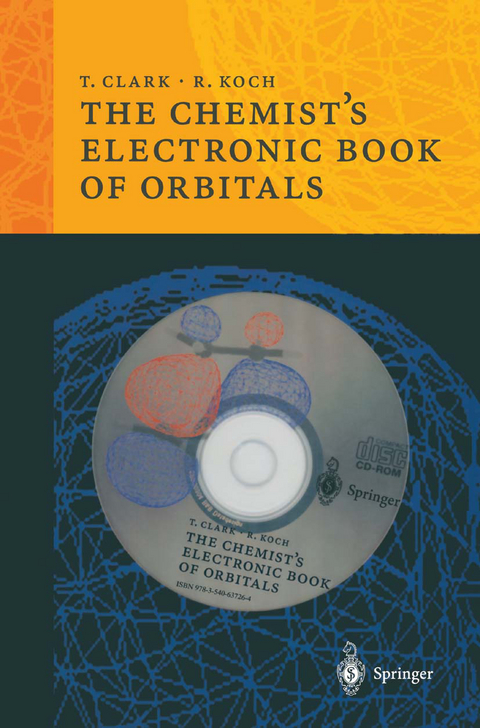
The Chemist’s Electronic Book of Orbitals
Seiten
1999
|
1999
Springer Berlin (Verlag)
978-3-540-63726-4 (ISBN)
Springer Berlin (Verlag)
978-3-540-63726-4 (ISBN)
For many years, Bill Jorgensen and Lional Salem's Organic Chemist's Book ofOrbitals was the standard work on qualitative MO-theory in Erlangen. It provided the basic principles as weH as MO-plots of exactly the orbitals that we needed to understand the effects that we were investigating. How ever, 25 years after its publication, the Organic Chemist's Book of Orbitals is essentiaHy unknown to the current generation of chemistry students, although qualitative MO-theory has become a standard too1. This and the new technical possibilities made possible by the development of web browsers, VRML-viewers etc. suggested that the time is right to attempt a more modern version, this time called The Chemist's Electronic Book of Orbitals. The resulting "book" is a tribute to its predecessor and we hope that it will playa similar role as vanguard for a new generation of chem istry publications in this area. The written text can be read alone, but is intended to be used in conjunction with the demonstrations and VRML objects on the CD. The orbital plots can be rotated, displayed and printed as desired. We have designed The Chemist's Electronic Book of Orbitals to be accessed from a standard web-browser with VRML viewer and JAVA in order to avoid the need for extra software on the CD and to make it acces sible from as many hardware platforms as possible. Many people have contributed to the success of this project. We espe cially thank Peter Enders at Springer for unflagging support.
Tim Clark ist der Kopf der Community BusinessModel-You.com. Der Trainer und Unternehmer ist zurzeit Gastprofessor an der University of Tsukuba in Tokio.
Introduction.- Linear Combination of Atomic Orbitals: H2 and He2 - The Simplest Examples; The Effect of Electronegativity; p-Orbitals and pi-Overlap; Combining AOs to Build MOs; The AH2 Walsh Diagram .- Larger Molecules: Ethylene; Cyclopropane; pi-Systems; Hyperconjugation.- Reactions: Lewis Acid/Lewis Base Interactions; Selectivity; Frontier MO Theory; The Woodward-Hoffmann Rules.- Elementary Symmetry: Symmetry Elements; Point Groups; Irreducible Representations and Character Tables; Degenerate Orbitals.- General Information - Installation - Use.- List of Molecules.- Glossary.
| Erscheint lt. Verlag | 6.5.1999 |
|---|---|
| Zusatzinfo | VIII, 96 p. 132 illus. With online files/update. |
| Verlagsort | Berlin |
| Sprache | englisch |
| Maße | 155 x 235 mm |
| Gewicht | 236 g |
| Themenwelt | Mathematik / Informatik ► Informatik |
| Naturwissenschaften ► Chemie ► Anorganische Chemie | |
| Naturwissenschaften ► Chemie ► Organische Chemie | |
| Naturwissenschaften ► Chemie ► Physikalische Chemie | |
| Schlagworte | Chemiker • Chemistry • Development • Hyperconjugation • Information • Molecule • Orbitale • PET • Physics • Point group • Reactions • symmetry |
| ISBN-10 | 3-540-63726-5 / 3540637265 |
| ISBN-13 | 978-3-540-63726-4 / 9783540637264 |
| Zustand | Neuware |
| Haben Sie eine Frage zum Produkt? |
Mehr entdecken
aus dem Bereich
aus dem Bereich
Buch | Hardcover (2024)
Springer Spektrum (Verlag)
64,99 €


